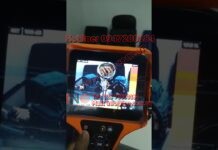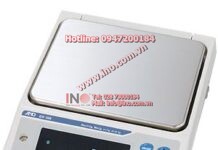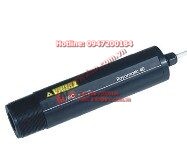Overview
The model 1254A Frequency Response Analyzer (FRA) delivers accurate measurement of gain and phase. The device under test is stimulated by a sinewave and the response analyzed at one, two or more points in the system. These responses are then correlated with the stimulus to determine the amplitude and phase relative to the generator. The ratio of the two measured signals can then be used to provide the system transfer function.
This process rejects all harmonics and, by increasing the integration time, even signals which are buried in noise can be measured accurately.
The 300 V range on the 1254A is particularly useful for making measurements on fuel cell stacks and high voltage batteries, used in hybrid vehicles and residential power supplies. Key product features include:-
- AC amplitude range – 10 mV to 10 V, for power supply testing
- Analyzer range 30 mV – 300 V, i.e. suitable for ATS (Automated Test Systems), power station vibration testing
- Noise rejection capability
- Synchronizer option enabling generator and carrier signals to be locked in terms of frequency / phase
- Ability to analyze non-linear systems
- Front panel or software (Visual Basic) control
- Modulator / demodulator card option for interfacing to AC carrier systems
Electrochemistry
Measurement of impedance has become an important tool in the study of electrochemical/biological phenomena and material properties.
The 1254A together with a potentiostat such as the model 1287A, can be used in a wide range of applications, including:-
- Corrosion and inhibitor studies
- Analysis of organic and inorganic coatings and films
- Research into solid electrolytes for oxygen sensors/fuel cells
- Development of novel anode/cathode materials and electrolytes
- Bioanalytical research into plant/soil properties
Materials Testing
When combined with a 1296 Dielectric Interface and temperature test equipment the 1254A can be used to test a wide range of materials, such as:-
- Supercapacitor/battery/fuel cell materials
- Charge transport in semiconductors, organic crystals, ceramics etc.
- Analysis of chemical reactions, polymerization and curing processes
- Novel gas and liquid sensors
- Characterization of ferro/piezoelectric and semiconductor materials
Control Systems
A standard use for a FRA is to generate a signal which is connected to a signal converter (this may take many forms; e.g. hydraulic, pneumatic or electrical), which forces controlled movement to take place (e.g. displacement transducers used in aerodynamic tests). These are placed on the system under test and the output signal fed back to the FRA via a sensor, enabling the system to be characterized. Typical uses include:-
- Automated test systems
- Power supply testing
- Aircraft instrumentation/system controls
- Aerodynamic tests – study of applied forces to wing structures
- Car shock absorbers
- Weapons guidance systems
- Rocket propulsion and vectoring technology
Synchronizer
The synchronizer option enables the generator to be locked to a rotating / reciprocating component, and measurements can then be made relative to this. Applications include turbine analysis – using harmonics to enable crack detection.
Modulator / Demodulator
This optional card allows the user to superimpose an external modulator signal onto the 1250 generator signal which acts as a carrier. This modulation signal can then be demodulated through the analyzer inputs. Applications include telecommunications and automated test systems.
Specifications
| Generator | |
| Waveform | Sine, square or triangle |
| Amplitude | 10 mV to 10.23 V rms |
| Maximum AC resolution | 10 mV |
| DC Bias Range | ±10.23 V |
| Maximum DC resolution | 10 mV |
| Output impedance | 50 Ω±1% |
| Max output current | ±100 mA peak |
| Frequency range | 10 µHz to 65 kHz |
| Max resolution | 10 µHz |
| Error: | ±100 ppm |
| Distortion | 2% |
| Stability | 24 hrs ±1ºC ±10 ppm |
| Sweep types | Frequency (logarithmic or linear) Amplitude (linear) DC bias (linear) |
| Resolution frequency amplitude |
10000 points 200 points |
| Maximum voltage hi to lo | ±46 V peak |
| Maximum voltage lo to ground | 150 V peak |
| Maximum current | ±100 mA peak |
| Impedance lo to ground | 100 kΩ // 100 pF |
| Connectors Front Rear |
Single BNC, floating shield floating, 4mm floating, BNC |
| Protection | Output is short-circuit protected |
Analyzers
Four independent analyzers operating in parallel
|
Range |
Dynamic range |
FS Peak Input |
Common Mode Rejection |
|
30 mV |
1 µV (90 dB) |
45 mV |
30 V |
|
300 mV |
10 µV (90 dB) |
500 mV |
30V |
|
3 V |
100 µV (90 dB) |
5 V |
30 V |
|
30 V |
1 mV (90 dB) |
50 V |
500 V |
|
300 V |
10 mV |
500 V |
500 V |
| Inputs protected to | ±500 V (300 V rms). hi or lo to ground |
| Coupling | DC or AC (-1 dB at 2.5 Hz) |
| Input impedance hi or low to ground | 1 MΩ, 35 pF |
| Cross-channel isolation @ 10 kHz | 100dB (1kΩ across inputs) |
| Measurement delay | 0 to 105 s |
Displayed Results
| Variable | Frequency, AC amplitude, DC bias |
| Measured parameters | Voltage gain, phase, real, imaginary, Z, R, X, Y, G, B, V, I group delay, C, L, Q, D |
| Interfaces | |
| RS232 & GPIB (IEEE-488) | For instrument control or for directly driving attached plotter using HPGL language |
| Power Requirements | |
| Voltage | 90 to 127V, 188 to 265 VAC |
| Frequency | 45 to 440 Hz |
| Power | 210 VA |
| Dimensions | |
| Width | 432 mm (17") |
| Depth | 573 mm (22.56") |
| Height | 176 mm (6.93") |
| Weight | 18 kg (40 lbs) |
| Operating Temperature Range | 0 to 50ºC (32 to 122ºF) |





![[Tech Tip] LG Scroll Compressor | Shenzhen Ruifujie Technology Co.,Ltd Scam/cheating customers. 深圳市瑞富傑科技有限公司 詐騙/欺騙客戶](https://www.ino.com.vn/wp-content/uploads/2022/06/q7v-H6Mn2mQ-100x70.jpg)














